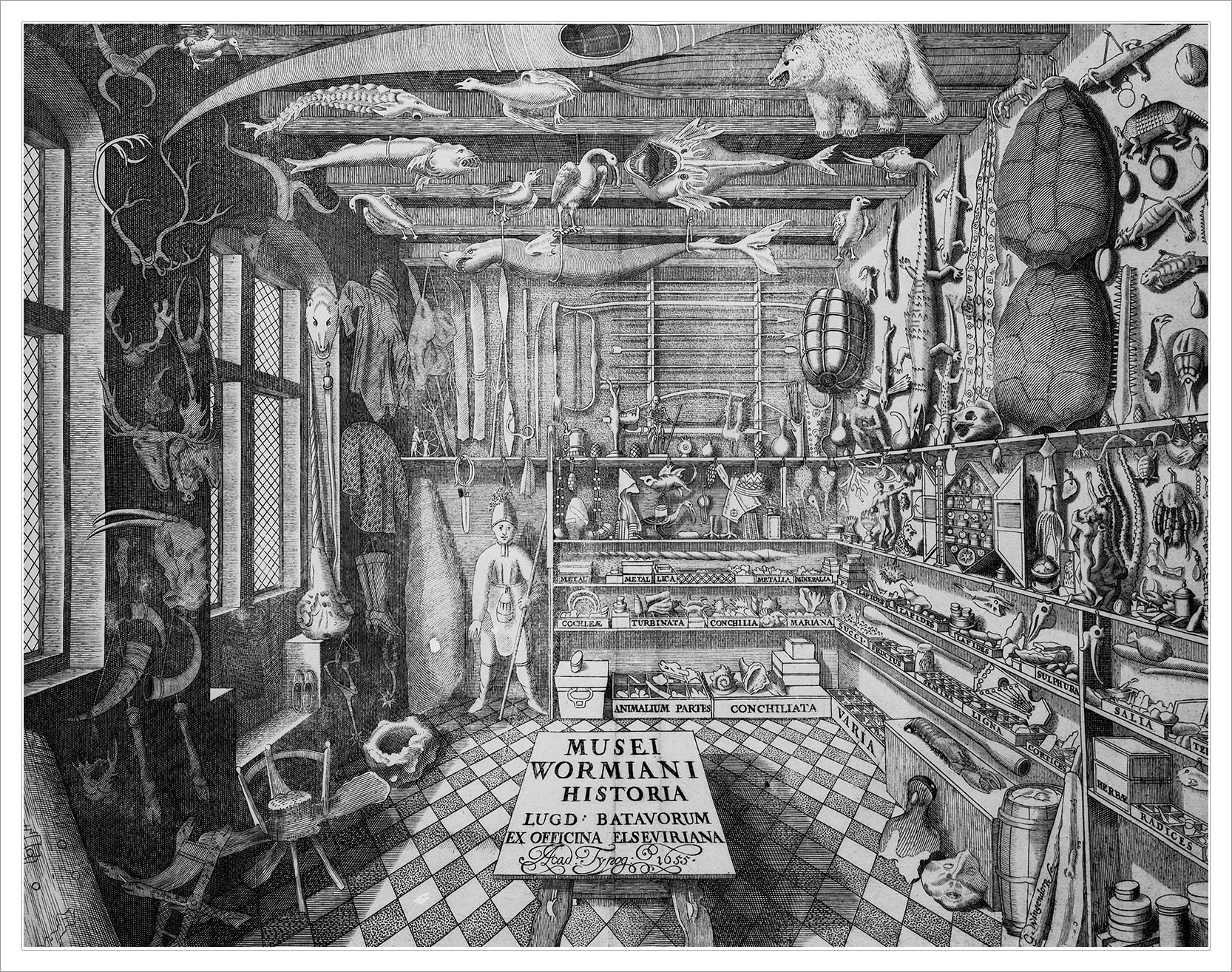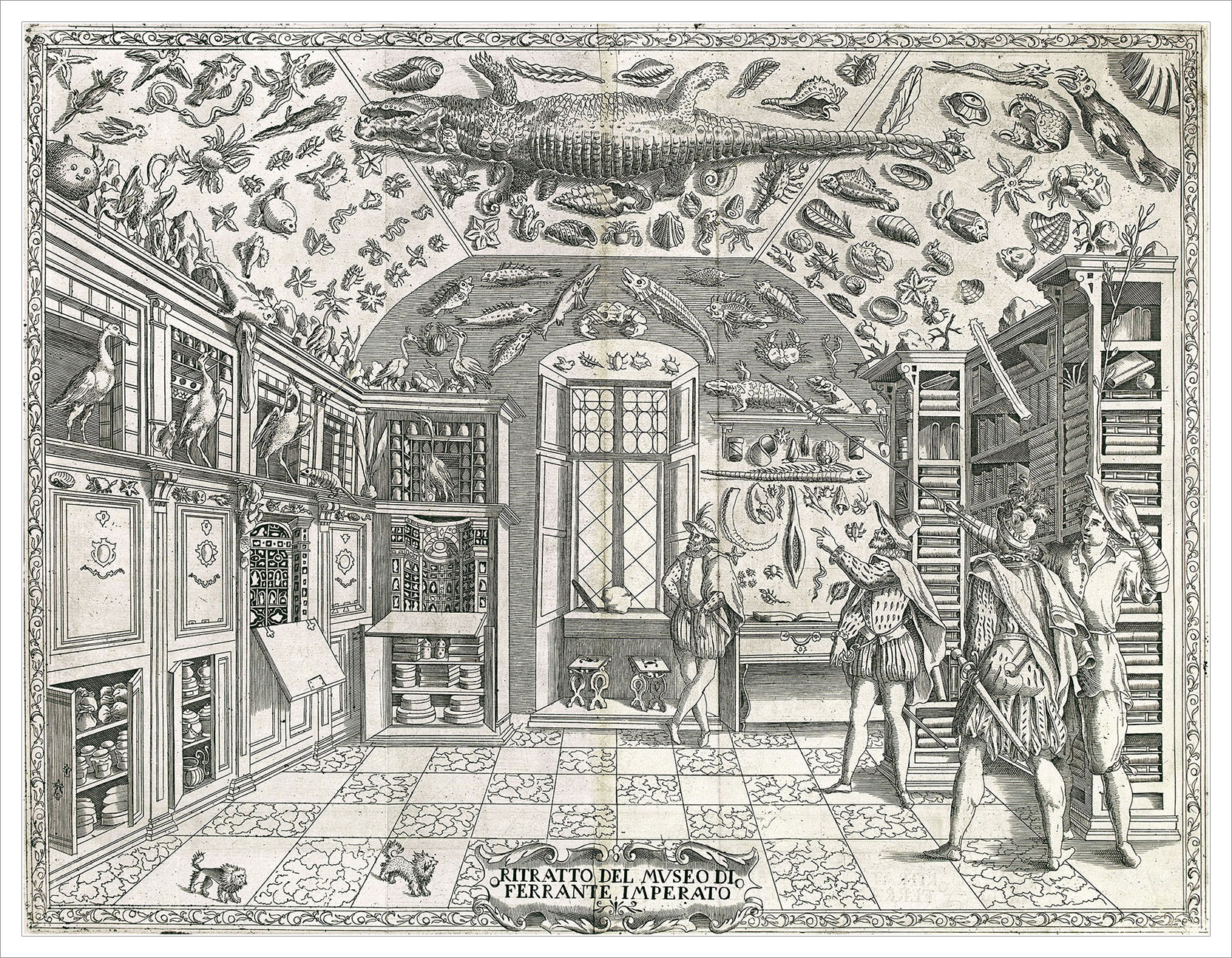Cabinet of Curiosities
Before museums existed, people had cabinets/rooms to display their collected treasures.
There was a time when museums did not exist. The role of collecting, preserving, and displaying the art, artifacts, and wonders of the world belonged largely to individuals. As far back as the 4th century BCE Greeks were collecting exotic treasures from the East. More than just trading in commodities, the Greeks collected the art and textiles from these far away cultures. Roman emperor Augustus decorated his homes not just with art but with rare objects and bones of giant animals. Over the centuries, as cultures explored & traded with increasingly distant lands, the trends in what was collectible grew & changed. By the 16th and 17th centuries wealthy European collectors had amassed enough objects that they created special cabinets and/or rooms to show-off their collections. They created cabinets of curiosities.


Wunderkabinett
From the German for art (kunst) or marvels (wunder) and cabinet (kabinett) or room (kammer), these cabinets & rooms were places where Renaissance scholars, merchants, royalty, and others could store their collections. Collecting was very fashionable in 17th century Europe and these cabinets were dedicated spaces to displaying all manner of objects. Like the contemporaneous maps of the world, some of these spaces were designed for show while others were more utilitarian.

Some collectors had thousands of specimens. The objects in these cabinets were thoughtfully categorized and organized, each piece contributing to the larger whole. Collecting was a way to bring order to the world, to exert some level of control over something that is uncontrollable. What was stored & displayed in these cabinets depended on the collector, but broad categories of objects included:
- Fine art
- Applied art (scientific instruments, anthropological objects, etc.)
- Natural materials (fossils, shells, rocks, etc.)
- Historical objects
These categories, as well as these collections, served as the precursors to our modern museums. The Amerbach Cabinet was a collection of art, books, coins, etc. that was assembled by various members of the Amerbach family. It was eventually co-purchased by the city of Basel & the University Basel and became the Kunstmuseum Basel in 1661, the first public museum in the world. Francesco I de’ Medici had his studiolo, a 26 x 10 foot room of curiosities that is part of the Palazzo Vecchio in Florence. Other Medici possessions served as the start of the Uffizi Gallery. Elias Ashmole, who amassed his fortune & collection through sometimes questionable means, gifted his collection to the University of Oxford which became the Ashmolean Museum in 1683.
Throughout the 18th century an increasing number of private collections were converted into public museums, some of which still exist today but all of which helped define what museums have become.
Added info: In 1784 Charles Wilson Peale’s collection became the Philadelphia Museum which was the United States’ first museum (and also the first to display a mastodon skeleton).


